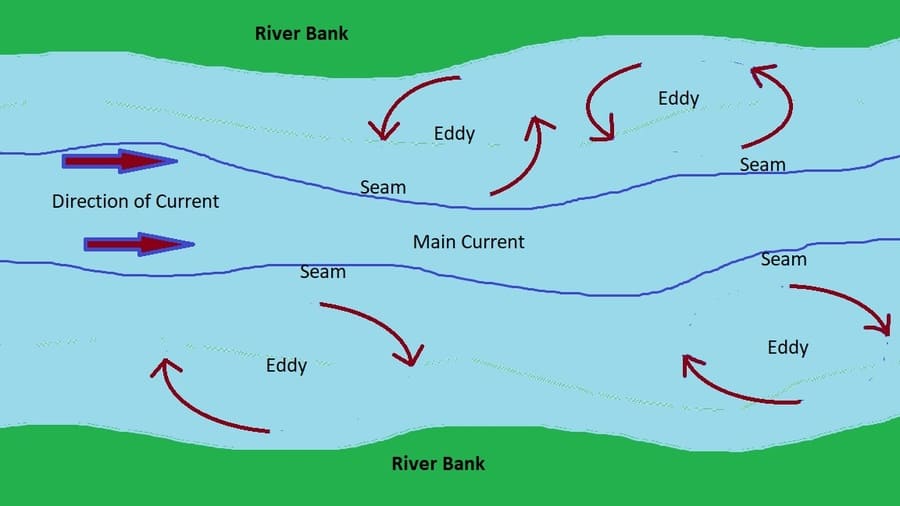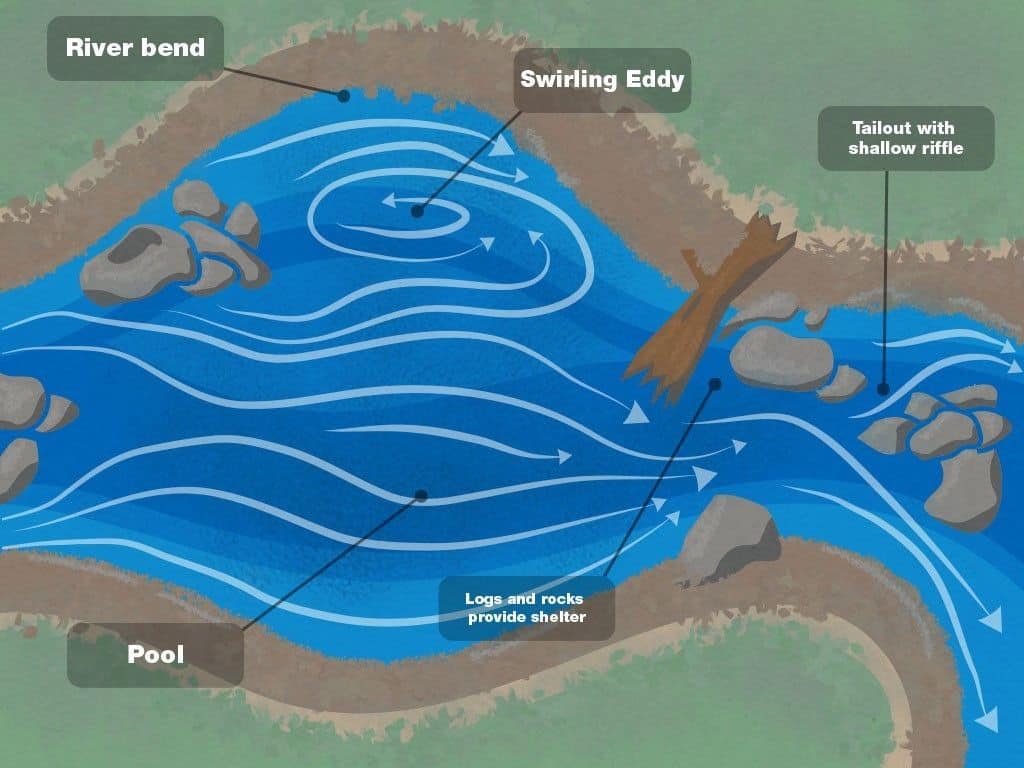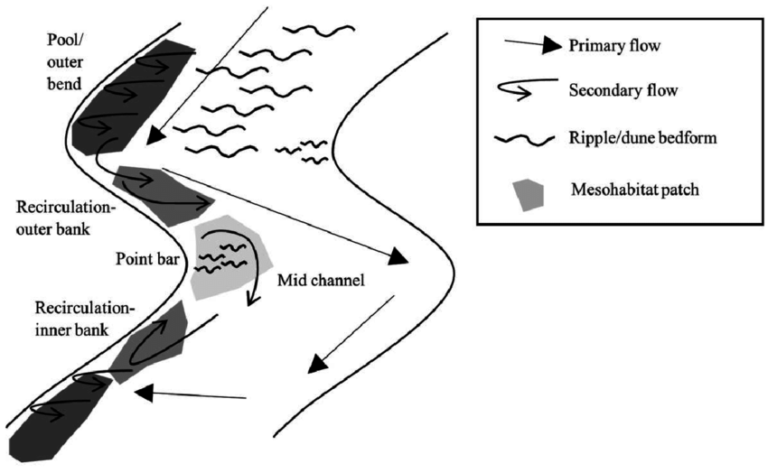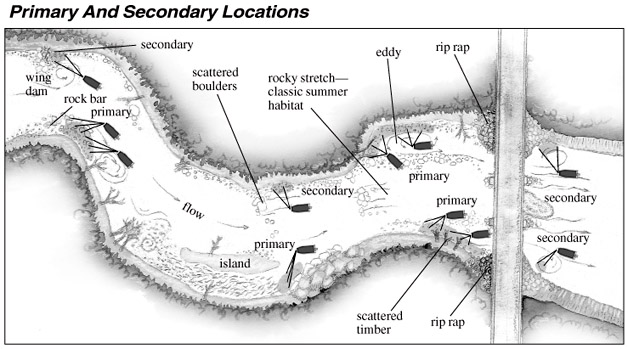How to Read a River for Fishing
Being able to read a river is very important when fishing rivers. Reading the river tells you where fish are, how deep the water is, what kind of structure there is, the type of current, and other things too.
Knowing these kinds of things helps you catch more fish and remain safe while doing it.
Common Terms and Areas of a River
When it comes to reading a river for fishing, there are several common terms and concepts that anglers use to understand the water conditions and the likely locations of fish. Here are some key terms and concepts:
- Current: The flow of water in a river, which can vary in speed and strength. Understanding the current is crucial for finding fish, as they often position themselves in areas where they can conserve energy while still having access to food. Current becomes especially important when reading a river for fly fishing.
- Eddies: These are areas of slower-moving water often found behind obstructions like rocks or logs. Eddies can be excellent spots to find fish, as they offer a break from the main current while still providing access to passing prey.
- Riffles: Shallow, fast-moving sections of a river characterized by a rocky or gravelly bottom. Riffles are often good places to find feeding fish, as the fast water brings food to them.
- Pools: Deeper, slower-moving sections of a river, typically found between riffles. Pools can be excellent spots to find larger fish, as they provide shelter and a place for fish to rest.
- Runs: These are transitional areas between riffles and pools, where the water is faster than in a pool but slower than in a riffle. Runs can be productive fishing locations, as they offer a mix of food and shelter.
- River Bends: These are simply bends in the river. A river bend can be throughout the entire river or just on one side of the river, making it wider or skinnier depending on the bend.
- Structure: Natural or man-made features in the river, such as rocks, logs, and submerged vegetation. Fish often use these structures for cover and ambush points.
- Current Breaks: Areas where the current is disrupted, such as behind rocks or along the edge of a riverbank. Fish often position themselves in these breaks to conserve energy and wait for passing prey.
- Feeding Lanes: Paths within the river where fish move to find food. These can be influenced by the current and the presence of structure.
- Bankside Cover: Overhanging trees, bushes, or other vegetation along the riverbank that can provide shade and cover for fish. This cover can be an attractive spot for fish, especially on hot days.
Primary vs Secondary Flow Points
This can be very confusing and hard to read. Simply put, the primary points are where the water is flowing in the main or “primary” direction.
Secondary flow points are areas where the river opens up or changes direction, causing the water in a certain area to flow in a swirling motion.
The secondary flow points will offer better fishing opportunities.
Which Areas are Best for Fishing?
Your best bet is going to be river bends, deep pools, and log or tree structure. These areas are much easier to identify and always have fish in them.
Another great place to fish is the bottom of small water falls or spill points.
Bass and other predatory fish wait at the bottom of these and eat the small baitfish and other creatures that fall down.
These falling prey are very disoriented and are often too weak to resist the current.
Just make sure to be careful if you are wading in these areas because the current can be quite strong.
Also read: Summer Bass Fishing in Rivers
River Bank Fishing
Reading the river is especially important when you are fishing a river from the bank.
Bank fisherman already have limited options when it comes to where they can fish, so they can’t afford to waste time and energy fishing bad spots.
The best options for riverbank fisherman are going to be logs and trees that are close to the shore, river bends, and eddies.
Also Read: How to Find Bass in a Pond
Conclusion
River fishing can be hard, and knowing how to read a river can be crucial to success.
Even with all the studying and learning, it takes lots of experience to get good at reading the river.
Get out into different river systems and environments to practice and get better. Stay safe and good luck!










